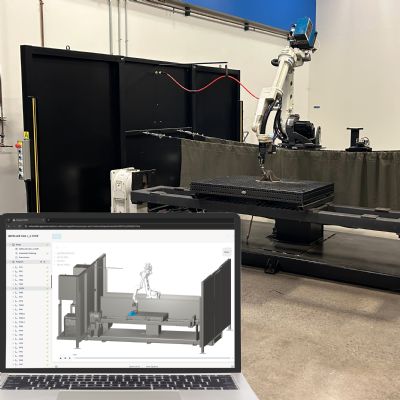Tips for Welding Sheetmetal Panels
March 1, 2010Comments
Welding sheetmetal panels, like any welding application, requires proper technique and equipment. While gas-tungsten-arc (TIG) welding is known as a more precise procedure, it also requires a more advanced level of skill (see article beginning on page 14). When welding thin sheetmetal panels, the main objective is to achieve optimal penetration while avoiding warping and burnthrough, and delivering a quality weld with a clean appearance.
Here we offer proper gas-metal-arc (MIG) welding tips and techniques.
Preparation
Als consider safety first. Make sure welders wear the appropriate protective equipment such as a welding helmet, safety glasses with side shields, gloves and long sleeves.
The welder must properly secure the ground clamp, and position the ground clamp as close as possible to the area where welding is being conducted to avoid damaging sensitive equipment such as wiring and sensors. Ensure the ground clamp is connected to clean sheetmetal free of paint and rust, electrical insulators that impede the proper flow of welding current and resulting in an unstable welding arc.
Equipment
Choose the thinnest-diameter welding wire possible to minimize heat input to the base material and helping to avoid burnthrough. With less filler metal, the welder has improved control over the weld bead, delivering an overall cleaner weld appearance.
Use a welding machine that provides a short-circuit transfer process, and develop the welding procedure so that wire-feed speed is 150 to 250 in./min. at 15 to 22 V. These parameters allow the welder to weld on thick and thin materials in all positions with a controlled current, making it easier to produce clean welds. Dependable current control minimizes spatter while delivering optimal penetration for low-heat-input applications.
Use a shielding-gas blend of 75 Ar-25 CO2, which helps to reduce penetration on thinner sheet since argon distributes less heat than 100 percent CO2. Having the proper wire and gas combination will minimize overall consumable costs.
ApplicationAvoid long welds. Use only short tack welds when possible to evenly dissipate heat. For long seams or when continuous welds are necessary, begin tack welding at the middle of the weld joint, and skip weld (or backstep) to evenly distribute heat and avoid stress buildup, warping and distortion.
Information provided by Lon Damon, welding-school instructor, The Lincoln Electric Co., Cleveland, OH: 216/481-8100; www.lincolnelectric.com.
See also: Lincoln Electric Co.
Technologies: Welding and Joining







